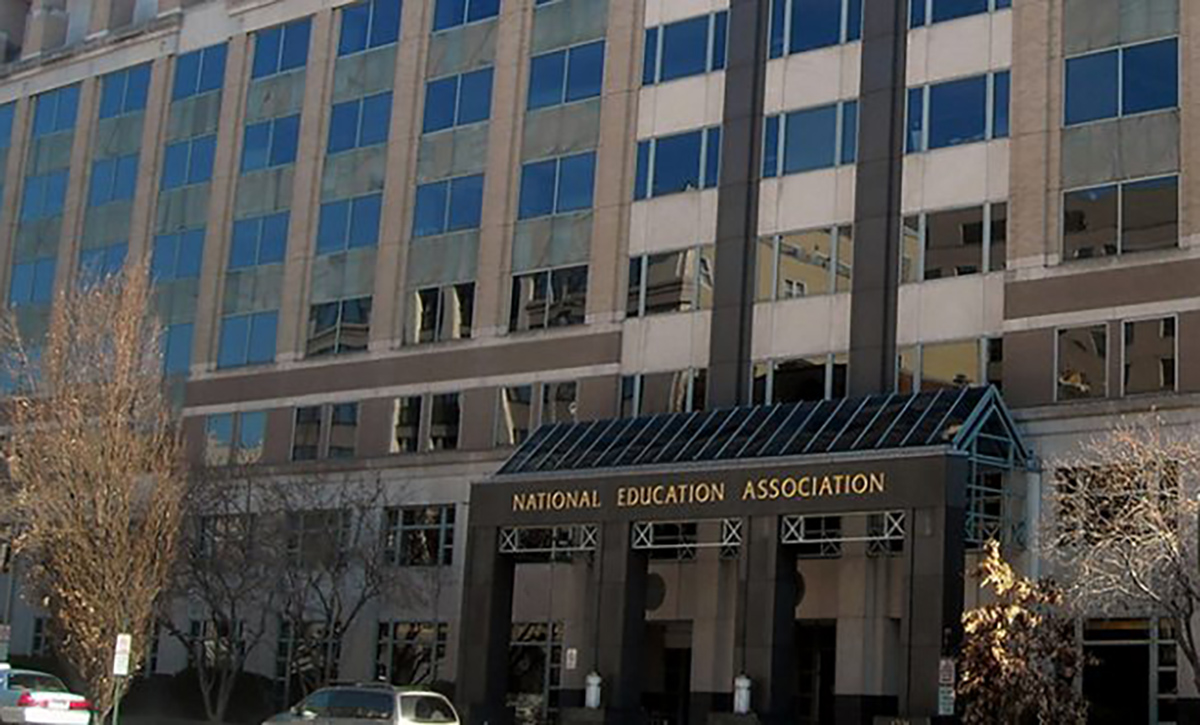The NEA Collects $375 Million in Annual Dues. Here’s Where the Money Goes
U.S. Department of Labor filing shows union spent funds equally on donations to state & local affiliates, overhead, and its own payroll and benefits

Get stories like this delivered straight to your inbox. Sign up for The 74 Newsletter
Teachers pay hundreds of dollars in dues to their state and local unions, for which they may see a return in the collective bargaining agreements those unions negotiate on their behalf. But they also paid $202 in dues to the National Education Association during the last school year. How was that money spent?
Because NEA has private-sector members, it is required to file an annual financial disclosure report with the U.S. Department of Labor. The latest report details membership totals and virtually all expenditures the union made during the 2021-22 school year.
NEA collected $374,720,347 in dues and spent it in roughly equal amounts on three things: 1) grants to state and local affiliates; 2) overhead and administrative costs for its headquarters in Washington and offices elsewhere around the country; and 3) salaries and benefits for its officers and employees.
Most of the money sent to state and local affiliates is in the form of UniServ grants, which helps pay the salaries and benefits of the collective bargaining specialists each affiliate employs. In exchange for the funding, the affiliates agree to send those staffers, at NEA’s request, to other states for up to 10 days to assist with “representational challenges, collective bargaining crises, training programs and/or other special needs situations.”
Affiliate spending also includes funding ballot initiatives in various states. Sometimes the money goes directly to a campaign, as with the $3 million NEA sent to Fair Share Massachusetts to help pass a millionaires’ tax last month. Sometimes it goes to a state affiliate, which then relays it to the initiative campaign. Here’s a list of where NEA sent money specifically for ballot measures or legislative actions:
- AFL-CIO — $424,000
- Citizens Who Support Maine’s Public Schools — $165,000
- Coloradans for the Common Good — $300,000
- Fair Share Massachusetts — $3 million
- Florida Education Association — $150,000
- Georgia Association of Educators — $175,000
- Michigan Education Association — $1.7 million
- Missouri NEA — $70,000
- Arizona Education Association — $453,556
- Idaho Education Association — $500,000
- Kansas NEA — $893,520
- Kentucky Education Association — $45,000
- Montana Federation of Public Employees — $183,000
- Montanans Organized for Education — $20,000
- South Dakota Education Association — $605,960
- Win Minnesota — $250,000
- Yes on the Children’s Amendment — $180,000
The “overhead” category includes spending not just on building maintenance, supplies and travel, but cash grants to friendly organizations. Many of these are political in nature, such as a $500,000 contribution to Building Back Together, which “advances the policy agenda of the Biden-Harris administration and effectively communicates the positive impacts of these policies to the American people.”
Other grants went to the State Engagement Fund ($6 million), the For Our Future Action Fund ($2.5 million) and the Democracy Alliance ($270,000).
Smaller grants were given to organizations that could be expected to produce content that supports NEA’s agenda. These included the Economic Policy Institute ($200,000), the Independent Media Institute ($50,000), The American Prospect ($25,000) and the Network for Public Education Fund ($25,000).
Also included in this category would be the $13.3 million the union devoted to the NEA Advocacy Fund, a political action committee responsible for making independent expenditures on behalf of candidates and issues at the federal level.
The final third or so of NEA’s revenue went to three executive officers and 526 employees of the national headquarters. Working for the working class has propelled most NEA staffers into the highest income levels.
In 2022, NEA’s base payroll was more than $69.2 million. That’s an average annual paycheck for an NEA employee of $131,646. More than three-quarters of NEA employees made six-figure salaries, and 42 of them earned more than $200,000.
NEA President Becky Pringle was paid $343,443 in base salary and another $82,657 in taxable cash allowances. Executive Director Kim Anderson was close behind, with a $335,615 base salary and $84,157 in allowances.
The union also allocated $43 million for employee pensions, health insurance and retiree health care.
With working membership shrinking, NEA must rely on higher dues to maintain these levels of spending. And since dues are tied by a formula to average teacher salaries, NEA has an internal financial incentive to seek higher pay specifically for veteran educators, as new hires at the bottom of the salary scale tend to bring down the average.
NEA is in no danger of financial distress — its net assets would allow it to operate for a full year with no new dues money at all. But belt-tightening doesn’t come easily to the union, so it will exert all its influence on school boards, legislatures and Congress to avoid it.
Mike Antonucci’s Union Report appears most Wednesdays; see the full archive.
Get stories like these delivered straight to your inbox. Sign up for The 74 Newsletter

;)